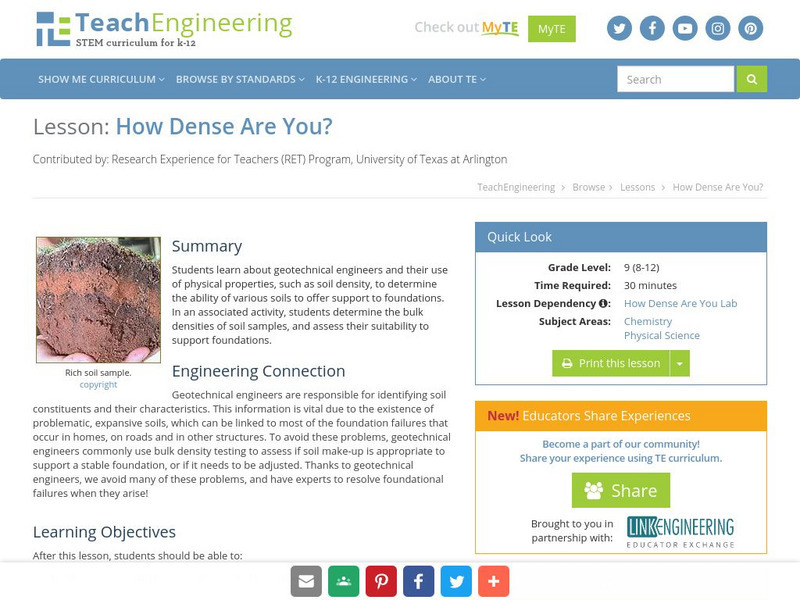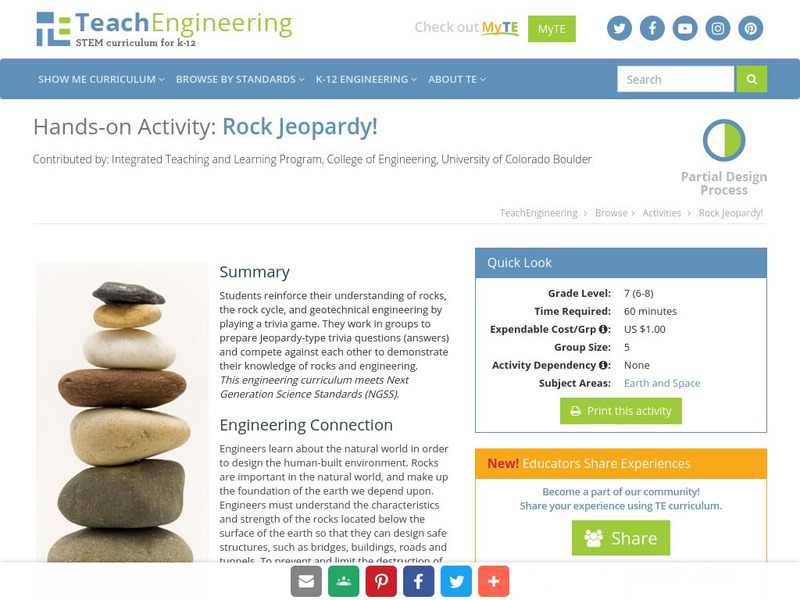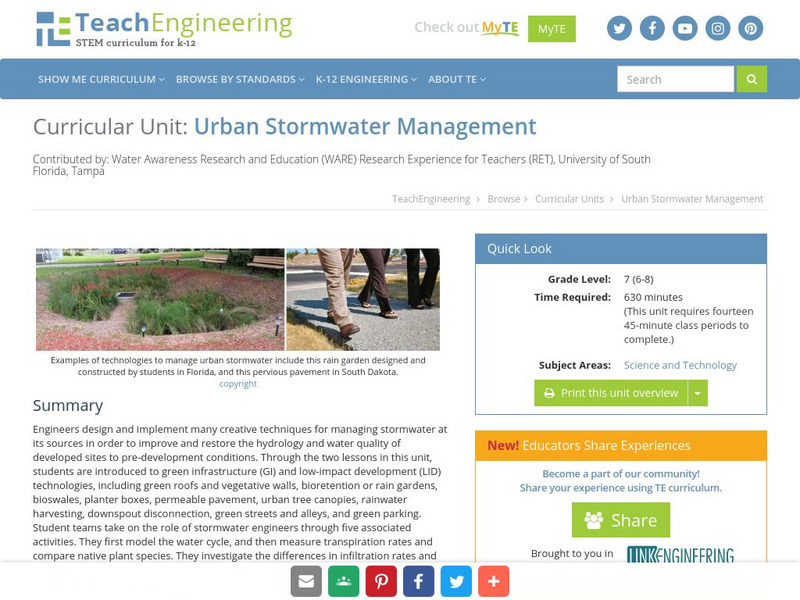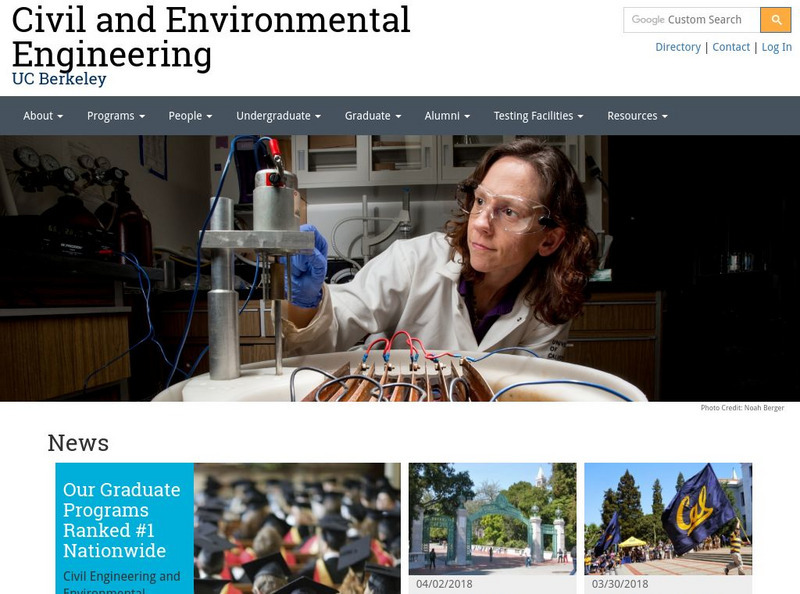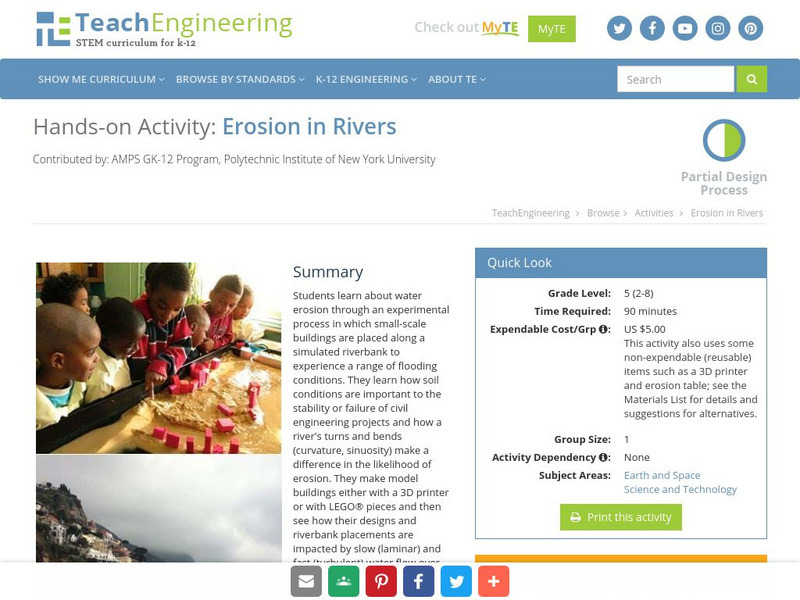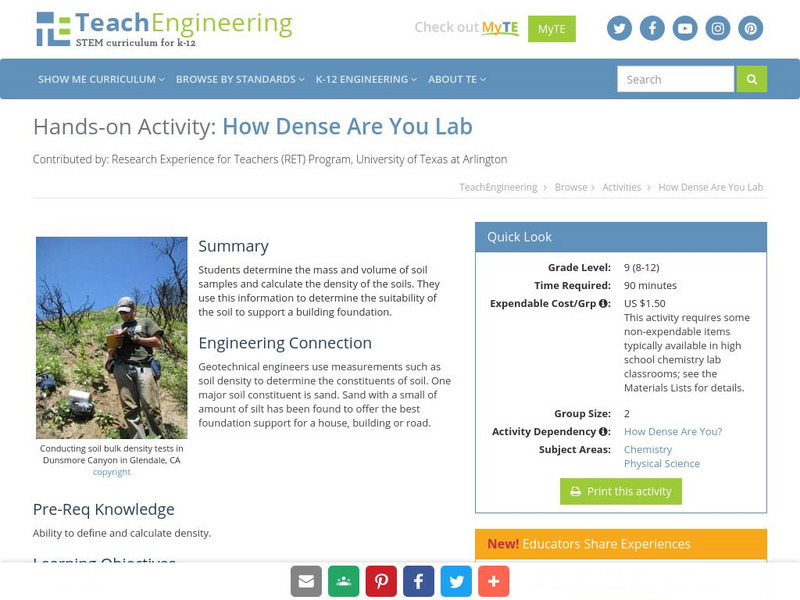TeachEngineering
Teach Engineering: Making & Breaking: The Rock Cycle
Middle schoolers learn the components of the rock cycle and how rocks can change over time under the influence of weathering, erosion, pressure and heat. They learn about geotechnical engineering and the role these engineers play in the...
TeachEngineering
Teach Engineering: How Dense Are You?
Students learn about geotechnical engineers and their use of physical properties, such as soil density, to determine the ability of various soils to offer support to foundations. In an associated activity, students determine the bulk...
TeachEngineering
Teach Engineering: Rock Jeopardy!
Students reinforce their understanding of rocks, the rock cycle, and geotechnical engineering by playing a trivia game. They work in groups to prepare Jeopardy-type trivia questions (answers) and compete against each other to demonstrate...
University of Wisconsin
University of Wisconsin Department of Civil and Environmental Engineering
This resource provides information about engineering programs and education.
TeachEngineering
Teach Engineering: Urban Stormwater Management
Through the two lessons in this unit, students are introduced to green infrastructure and low-impact development technologies. Student teams take on the role of stormwater engineers through five associated activities.
TeachEngineering
Teach Engineering: Soil Core Sampling
Students learn about one method used in environmental site assessments. They practice soil sampling by creating soil cores, studying soil profiles and characterizing soil profiles in borehole logs. They use their analysis to make...
TeachEngineering
Teach Engineering: Soil Investigations
Students learn the basics about soil, including its formation, characteristics and importance. They are also introduced to soil profiles and how engineers conduct site investigations to learn about soil quality for development,...
TeachEngineering
Teach Engineering: Does Media Matter? Infiltration Rates and Storage Capacities
Students gain a basic understanding of the properties of media- soil, sand, compost, gravel- and how these materials affect the movement of water (infiltration/percolation) into and below the surface of the ground.
TeachEngineering
Teach Engineering: Rocks, Rocks, Rocks
Students test rocks to identify their physical properties (such as luster, hardness, color, etc.) and classify them as igneous, metamorphic or sedimentary. They complete a worksheet table to record all of the rock properties, and then...
TeachEngineering
Teach Engineering: How Mountains Are Formed
Students investigate how mountains are formed. Concepts include the composition and structure of the Earth's tectonic plates and tectonic plate boundaries, with an emphasis on plate convergence as it relates to mountain formation....
University of California
University of California, Berkeley: Civil and Environmental Engineering
This resource provides information about civil and environmental engineering.
TeachEngineering
Teach Engineering: Erosion in Rivers
Students learn about water erosion through an experimental process in which small-scale buildings are placed along a simulated riverbank to experience a range of flooding conditions. They make model buildings either with a 3D printer or...
TeachEngineering
Teach Engineering: How Dense Are You Lab
Students determine the mass and volume of soil samples and calculate the density of the soils. They use this information to determine the suitability of the soil to support a building foundation.
Cosmo Learning
Cosmo Learning: Engineering Geology and Geotechnics
A collection of video lectures from an engineering geology and geotechnics course taught at the Missouri University of Science and Technology. The course explores the "procedures and techniques used to evaluate geologic factors for site...

